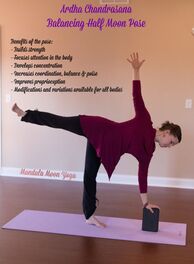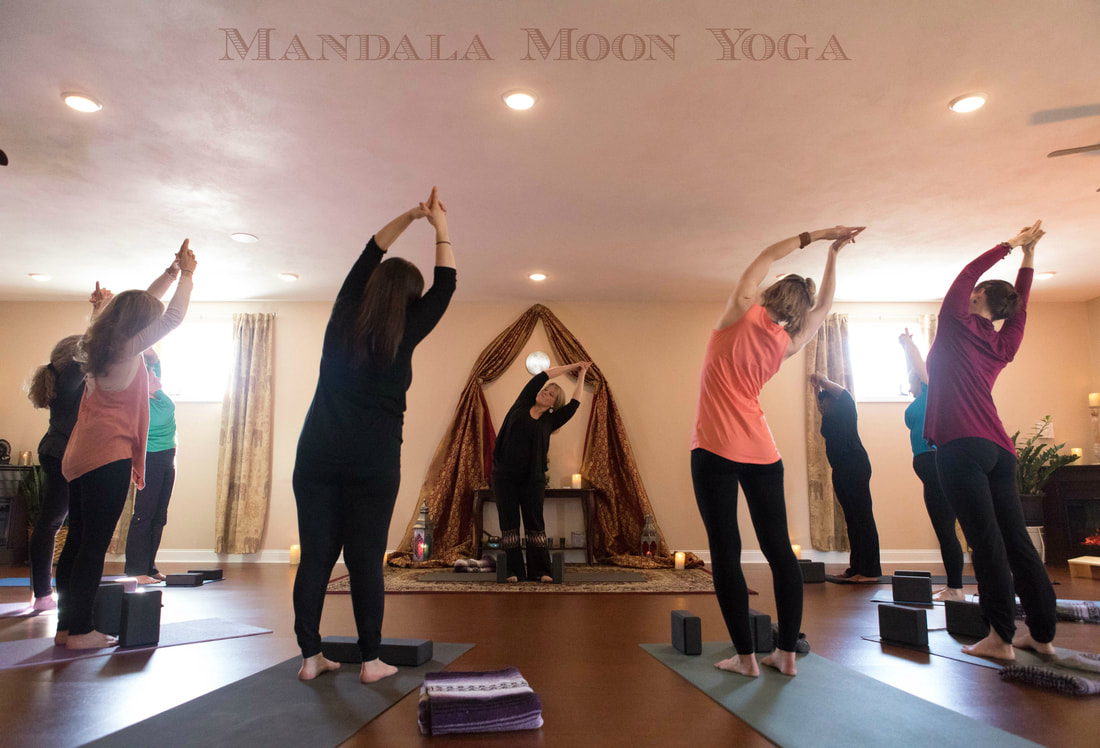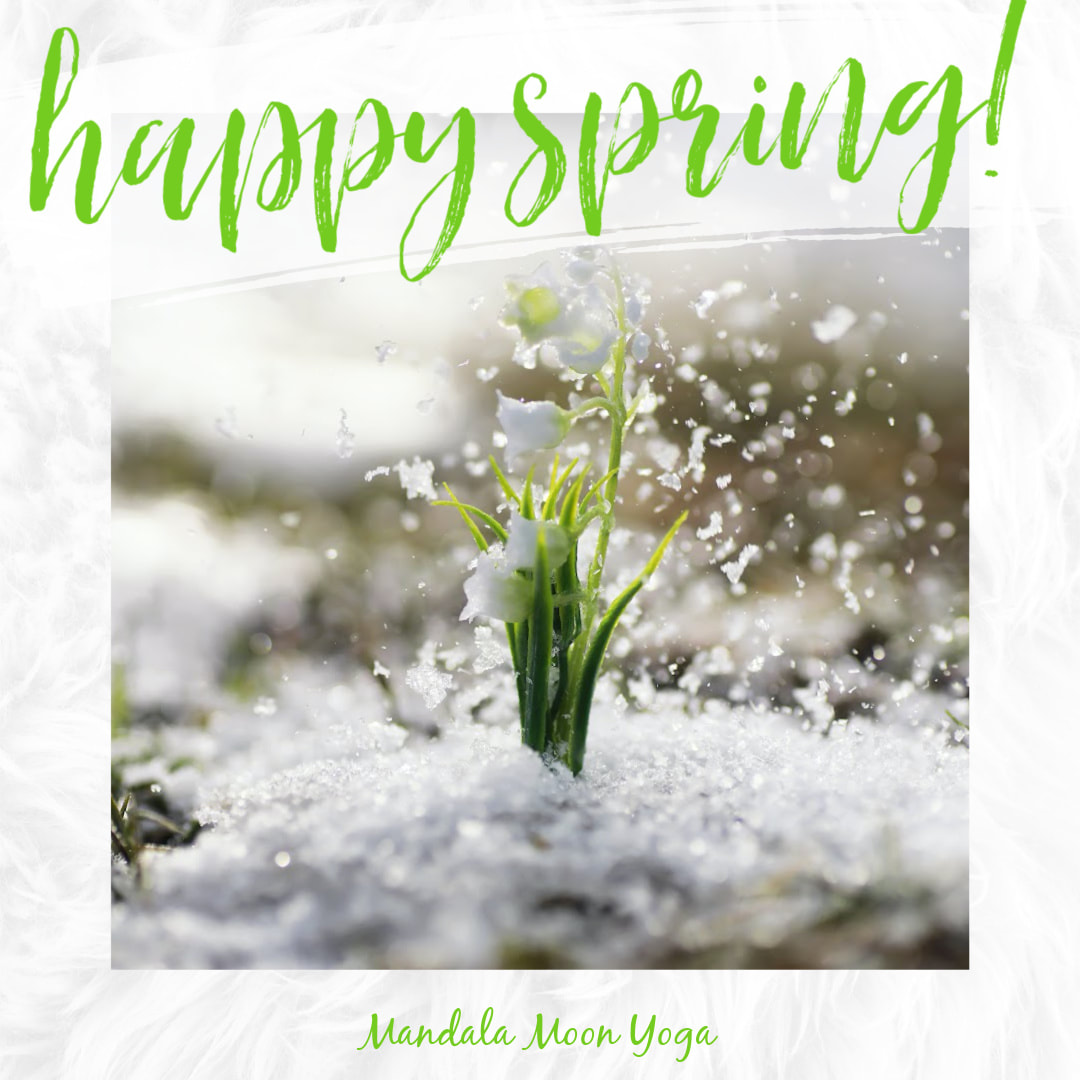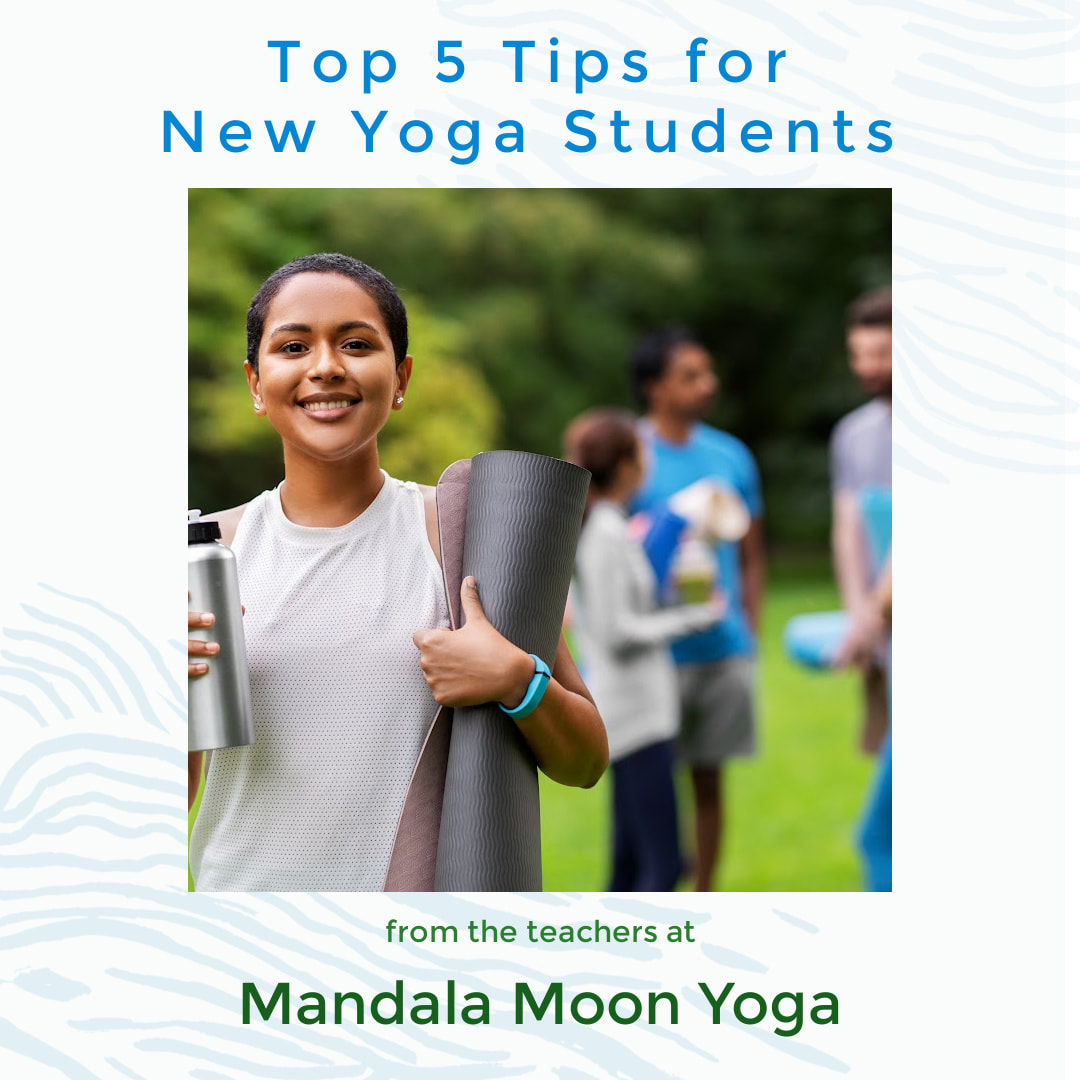
Sanskrit:
Ardha Chandrasana (ARE-dah-chan-DRAHS-ana)
Ardha = Half
Chandra = Moon
Asana = Pose
You may also hear this pose referred to as simply a standing side bend or possibly as Indudalasana (in-DU-dah-LAH-sah-nah). That is admittedly kind of fun to say.
Indu = another name for Moon
Dala = Portion
Benefits of Ardha Chandrasana:
We don't tend to stretch the muscles in the side of our body in our daily lives, so it's a great opportunity to lengthen, strengthen, and stretch those sides. This pose provides stretching and strengthening of the entire length of the body, especially the intercostal muscles between the ribs. It will increase spinal flexibility and alignment as well as stimulate digestion, expand breath capacity, and develop focus and concentration.
How to practice:
- Stand in Tadasana, with your feet parallel and hip-width apart.
- Inhale as you raise your arms overhead, and interlace your fingers into Steeple Mudra (fingers interlaced, index fingers pointing up).
- Exhale, rolling your shoulders back and down. Press down through the soles of your feet. Inhale as you lengthen up out of your waist and reach up through the crown of your head.
- Exhale, pressing hips to the left, keeping shoulders and hips squared to the front.
- Inhale, Lift your rib cage, continuing to lengthen the torso. Keep hips and shoulders squared to the front, and with an exhale, extend through your fingertips and bend your upper body to the right.
- With each inhale, lengthen upward, and with each exhale, arch slightly deeper to the right. Continue lengthening and arching until you come to your edge.
- Maintain equal weight on both feet.
- To release, press down through your feet, shift your hips back to center, and lift your shoulders over your hips.
- Relax your arms down by your sides, and take a moment to notice sensations in the body.
- Repeat on the other side.
Possible Modifications or Variations:
- Keep both hands on your waist.
- Quarter Moon: Place right hand on your waist and raise left arm up and over as you bend to the right. (Reverse, of course, for other side.)
- Hold a yoga strap (or your bathrobe belt) taut between your hands overhead; keep arms wide apart as you side bend.
- Use the wall for support with your back against the wall.
Precautions:
- With heart conditions or weak back or shoulder muscles, avoid long holdings and keep arms below the head, using the first modification above.
- With uncontrolled high blood pressure, skip this pose.
As always, if a posture causes pain, come out of it immediately. Ask a qualified (certified and registered) yoga teacher for assistance.




 RSS Feed
RSS Feed